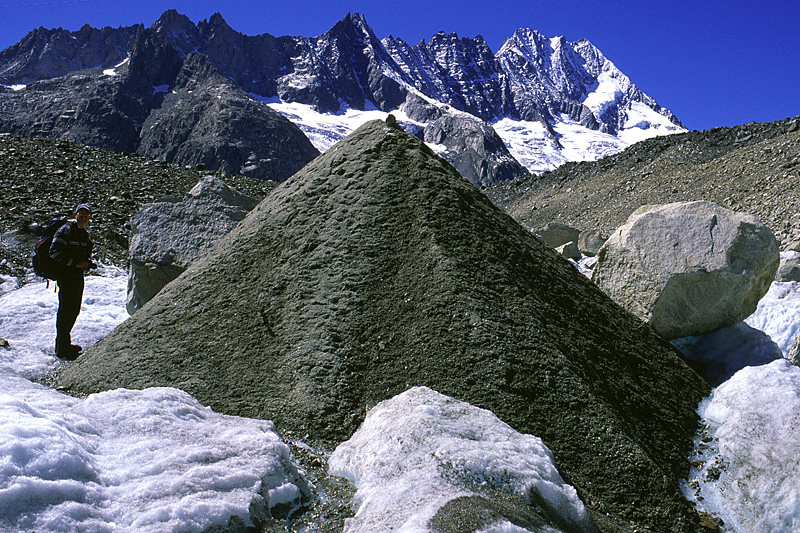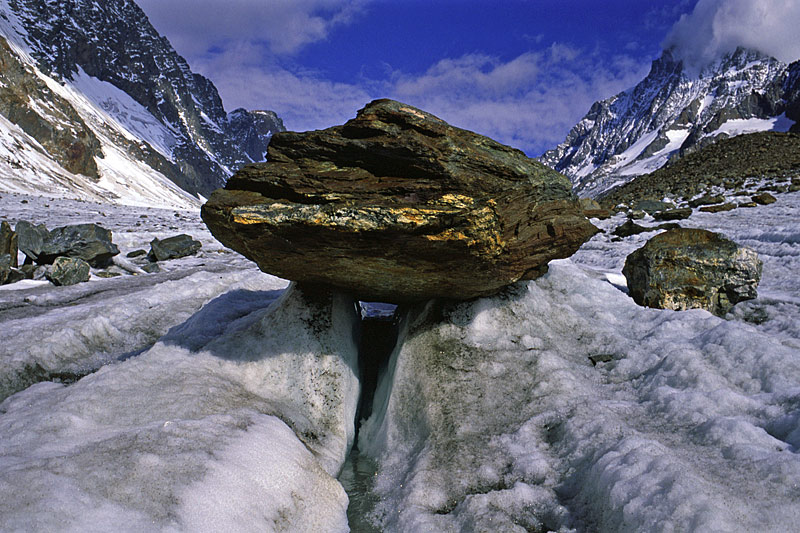 Unusually large dirt cone; it contains mostly ice and is covered by a thin layer of dark sand only; Lauteraarhorn in the background. |  Dirt cones are formed when fine glacial sediments reach the glacier surface as a result of ablation. The sediments then protect the ice from incoming radiation. |  Weathering of boulders containing ferrous minerals leads to remarkable brown to orange colouring due to the formation of the mineral limonite. |  This big block of amphibolite probably originates in the NE face of Finsteraarhorns. "Finster", in fact, means dark and is a reference to dark rocks. |
 Blue glacier ice below a large glacier table. |  Foliation is cleraly visible under another glacier table. |  Glacier table in a meander of a meltwater stream. |  This glacier table's rock will soon fall off. |
 Glacier tables at an early stage of their formation (left foreground and on the right) and in a fully developed state (centre). |  A small meltwater stream dissects the ice pillar below this glacier table. |  Perfectly developed glacier table on Strahlegggletscher. |  Several glacier tables on Strahlegggletscher; Schreckhorn in the background. |